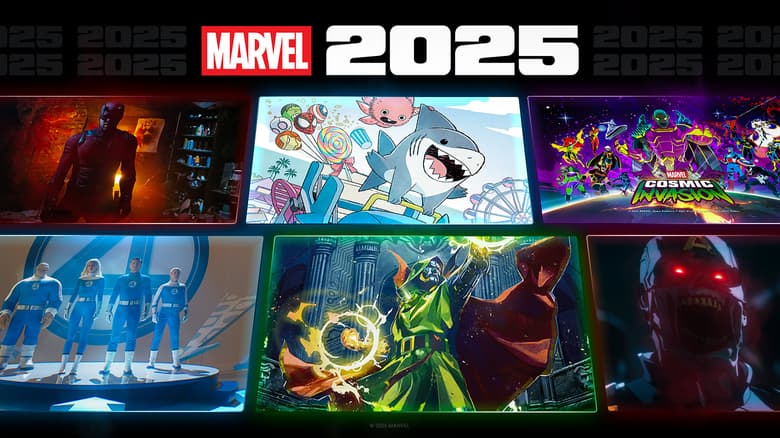Luke Cage Faces a Return to Prison… and the Ringmaster
David F. Walker on bringing Luke back to where it all began.

Luke just barely manages to escape a collapsed mine but somehow this strange prison’s hospital of horrors is so much worse—it’s all Luke can do to keep his sanity as he finds himself face to mesmerizing face with none other than The Ringmaster!
On January 24 comes David F. Walker and Guillermo Sanna’s LUKE CAGE #169, the fourth part of Luke’s Legacy storyline. So far the story explored the depths of Luke’s mind and his murky past, but now Luke can barely remember his name. Can Luke still save the day if he doesn’t even know who he is?! Only time and 22 glossy pages will tell!
Writer David F. Walker stopped in to mull over the finer points of Luke’s latest misadventure…
Marvel.com: Catch us up on what’s been going on in the CAGED storyline so far!
David F. Walker: Luke runs into a bit of bad luck while driving through Mississippi, and ends up in prison. But it’s not just any prison… it is a… wait, nevermind, I don’t want to spoil anything!

LUKE CAGE #169
Marvel.com: How does the Ringmaster fit into all of this?
David F. Walker: Ringmaster runs the prison! Without giving away any major details, Ringmaster—being an opportunist—has managed to take control of the prison. And not just the prison, but the town located next to the prison as well…
Marvel.com: How did you re-interpret the Ringmaster and why did you choose him for this specific story?
David F. Walker: Honestly, Ringmaster was a last-minute decision. The original storyline for CAGED was much different. And then, for various reasons, there were a lot of changes made to the story, and a new villain was needed.
Several names were tossed around—all of them based on their powers, and how those powers could be used in service to the story. I don’t recall whose idea it was to use the Ringmaster, but once the name came up I knew I could do something with him. Ringmaster has always come across like one of those mustache-twirling villains who says, “Curses, foiled again,” whenever he gets defeated; I decided to play with him, and re-interpret him as someone who has lowered the bar of his own villainy, just so he can feel like he’s good at what he does. He’s no longer looking to rule the world, just this prison and the small town across the street.
Marvel.com: How does Guillermo Sanna’s art complement the story you set out to tell in issue #169?
David F. Walker: Guillermo has a great energy to his work! It is very fluid, and he is able to convey both action and emotion in ways that make the story come alive. I studied his earlier work, hoping to craft a story that would not only play to his strengths, but also provide him with something he would enjoy drawing.
Marvel.com: How has Luke been handling the emotional strain of everything that has happened to him in the last few issues?
David F. Walker: I think answering this question might verge on giving away a key plot point, but let’s just say that Ringmaster’s powers is hypnotism and Luke may be having trouble remembering little things—like who he is, that he has powers, and he has a family.
Marvel.com: Ringmaster and Luke are both these very enigmatic characters—how do you break those blocks down and relate to them as characters?
David F. Walker: Well, for The Ringmaster I simply thought about what it would be like to be a master criminal who fails all the time. How would I learn from my mistakes? And rather than straighten up and fly right, I figured I’d probably just lower my expectations so that success would be more easily attainable.
As for getting into the head of Luke Cage… I just call my cousin Jimmy. He’s like the real-life Luke Cage, only he has no super powers, a bad knee, and asthma.
Marvel.com: What inspired you to write the “Caged” Legacy arc?
David F. Walker: When the Legacy initiative was announced, everyone working on Marvel titles was essentially told to develop a story that in some capacity gets the character back to their roots. It seemed like an obvious choice to put Luke back where he was when he was first introduced in Marvel universe back in the 1970s: in prison for a crime he didn’t commit.
The initial story I developed was much different from what eventually got the green light. The one thing that remained from the earlier concept of the story was that Luke would be put into a position where he has lost his freedom, and he must rediscover the hero within him. That is the essence of Luke Cage—he is a man who finds himself in impossibly difficult circumstances but still rises to the occasion of being a hero.
You won’t want to miss the next thrilling chapter of “Caged” in LUKE CAGE #169—pick it up January 24!
The Daily Bugle
Can’t-miss news and updates from across the Marvel Universe!




